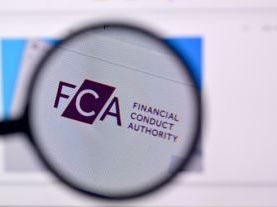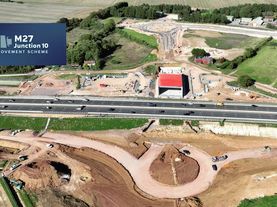Following Prime Minister Sunak’s decision to delay the phase-out deadline for new diesel and petrol car and van sales until 2035, the focus has shifted to the Government’s plans for a Zero Emission Vehicle (ZEV) Mandate.
The mandate sets annually increasing targets for the sales of battery electric cars and vans through to 2030. It is the mandate and not the phase-out target that will have the biggest impact on fleet decarbonisation over the next seven years.
The Government remains committed to introducing the mandate in January 2024 and has published its revised plans following a consultation in March this year.
Included in the response are several changes that the BVRLA pushed for during the consultation:
- Acknowledgment of the challenges hampering the current van transition and adjusting the ZEV mandate in response
- Recognition of the role of car clubs and shared mobility, including introduction of more flexibility around car club criteria
- Introduction of a robust review mechanism
- Focus on an accessible transition with confirmation of additional credits for WAVs and creation of a Wheelchair Accessible Vehicle (WAV) Zero Emission Transition Group
Note: the mandate currently applies to Great Britain only, not Northern Ireland. It is a requirement of the Climate Change Act 2008 that the regulation be approved by the Northern Ireland Assembly for it to apply in Northern Ireland. When the Assembly can approve the legislation and chooses to do so, Northern Ireland will adopt this regulation. Until then, Northern Ireland will remain subject to an appropriately scaled version of the existing New Car and Van CO2 regulations.
ZEV mandate: what has changed?
The changes made to the terms of the mandate generally offer greater flexibilities to manufacturers. The aim of this is to support the transition of established product line ups containing non-ZEVs to solely ZEV portfolios.
A review of the mandate has been confirmed to be completed by Q1 2027.
Notable changes include:
Cars and vans
- Minium criteria for vehicles have been softened
- Vehicle range must be at least 100 miles, down from 120 (this is stated to be open to review as technology and consumer requirements develop)
- Vehicle warranties must provide for replacement of the traction battery of a BEV if its capacity falls below determined limits. Those limits are 70% for cars, 65% for vans
- Trajectories from 2030 to 2035 has also been confirmed, subject to being legally adopted in future legislation
- Cars: 84% in 2031 -> 88% in 2032 -> 92% in 2033 -> 96% in 2034 -> 100% in 2035
- Vans: 76% in 2031 -> 82% in 2032 -> 88% in 2033 -> 94% in 2035 -> 100% in 2035
- Allowance for a manufacturer to transfer non-ZEV CO2 allowances to the ZEV mandate scheme. Transfer caps have been increased from 25% to
- 65% in 2024 -> 45% in 2025 -> 25%
Vans
- A softer initial trajectory, which then accelerates. The percentage of new van sales being zero-emission vehicles must be:
- 10% in 2024 -> 16% in 2025 (down from 19%) -> 24% in 2026 (up from 22%)
- Manufacturers’ ability to borrow credits on van sales. A manufacturer can borrow credits to cover up to 90% of their ZEV obligation in 2024, reducing to 50% in 2025 and 25% in 2026.
- Cost of van credits. Down to £9k per vehicle in 2024, rising to £18k from 2025 (credits borrowed in 2024 will be £18k)
Car clubs
- Holding period for car clubs has been reduced to 18 months
- Exemption from car club holding period if vehicle is written off
- Change in booking terms to allow up to 10-day continuous use of qualifying vehicle
ZEV mandate: what has stayed the same?
- The car trajectory (percentages of a manufacturer’s new vehicle sales being ZEVs)
- 22% in 2024 -> 28% in 2025 -> 33% in 2026
- Official legislation is still in place up to 2030. By that point, 80% of new car sales must be ZEV, 70% of vans.
- Manufacturers’ ability to bank credits if selling more ZEVs than the mandate stipulates
- Manufacturers’ ability to borrow credits for cars, from other manufacturers if selling fewer ZEVs than the mandate stipulates
- Cost of car credits, still £15k per vehicle
- Categorisation of Wheelchair Accessible Vehicles (WAV)
Next steps and critical timings
- January 2024: ZEV mandate officially comes into effect
What are we doing about it?
The nature of these updates shows that fleets and their customers cannot afford to rest on their laurels. Although the Government’s overall deadline has been pushed to 2035, the terms of the ZEV mandate mean that the pace of the transition will continue to accelerate in the years ahead.
The BVRLA will continue to work with Government officials and stakeholders from across the industry to ensure that Road to Zero momentum is not lost and that any additional Phase-Out ‘breathing space’ is used wisely.
Events like our Fleets in Charge Conference, held in Westminster on 20 September, further those discussions and give us greater opportunities to pull the industry together and share our message. An episode of our Inside Track podcast "ZEV mandate is coming: what is it all about?" explores this topic further and is available now.




